With a practical approach grounded in decades of experience, our team is dedicated to being the lowest-cost producer of low-carbon hydrogen and derivative fuels in our markets.
Why Green Hydrogen?
The 'Power-to-X' process involves the conversion of power into a low-carbon gas. We are designing facilities to produce low-carbon hydrogen through the hydrolysis of water using what is intended to be decarbonized electricity, which would classify the hydrogen as 'green'. Furthermore, we plan for the hydrogen to be convertible into other low-carbon molecules such as ammonia and methanol, for various applications.
The low-carbon hydrogen market is forming rapidly driven by a need to decarbonize the economy. Hydrogen is currently used in a variety of industrial processes including the refining of petrochemicals and in the chemicals industry, and there is potential for wider applications including power production, heating and transportation. In Canada, it is currently estimated that grey hydrogen consumption is approximately three million tons per annum. The majority of this hydrogen is produced from methane in a steam reformation process, which produces carbon emissions. Conversely, we believe our proposed solution for the conversion of clean power into a molecule that can be stored, transported, and utilized in various applications presents a compelling value proposition that we believe will also substantially reduce emissions.
What is Our Strategy?
Canadian Power-to-X Partners Inc. is developing plans for facilities to produce low-carbon fuels derived from clean electricity. Our team possesses extensive expertise in critical development areas such as commercialization, project finance, engineering, procurement, and government relations. With a practical approach grounded in years of experience, our team is dedicated to building a diversified portfolio of projects. Initially, the projects are expected to have a typical size of 100 MW, based upon a repeatable and modular design to enhance engineering and procurement efficiencies. These projects will likely be grid-connected, to streamline operations, and co-located with the end user to simplify transportation logistics and expense. This approach aims to reduce risk and ensure the viability of bankable projects through to financial close. Given our initial project sizes and simplified approach, there is a higher probability of establishing a successful path to financing, construction and operations.

The Benefits of Hydrogen
to local economy and heavy industry
Each project will contribute to between 300 – 800 jobs during construction and between 200 – 240 jobs during operations
This will support the hydrogen ecosystem, e.g., new businesses
The jobs created are generally high-quality positions that require skilled labour
Job Creation
A curtailment strategy will minimize grid usage when it matters most
This approach will support the development of additional grid-firming technologies
Brings technology into the system that can absorb and store excess energy
Grid Efficiency
Hydrogen will lead to the decarbonization of Ontario’s heaviest emitters, meanwhile:
protecting jobs
attracting investment
Decarbonization
Creates a new supply chain and supports other sectors, e.g., transportation
Drives energy security by converting locally produced electricity into a gas that’s used to decarbonize heavy industry
Additional Benefits
We believe our solution will be consistent with the vision of Bill Gates:
“Clean hydrogen is the Swiss Army Knife of decarbonization.”





